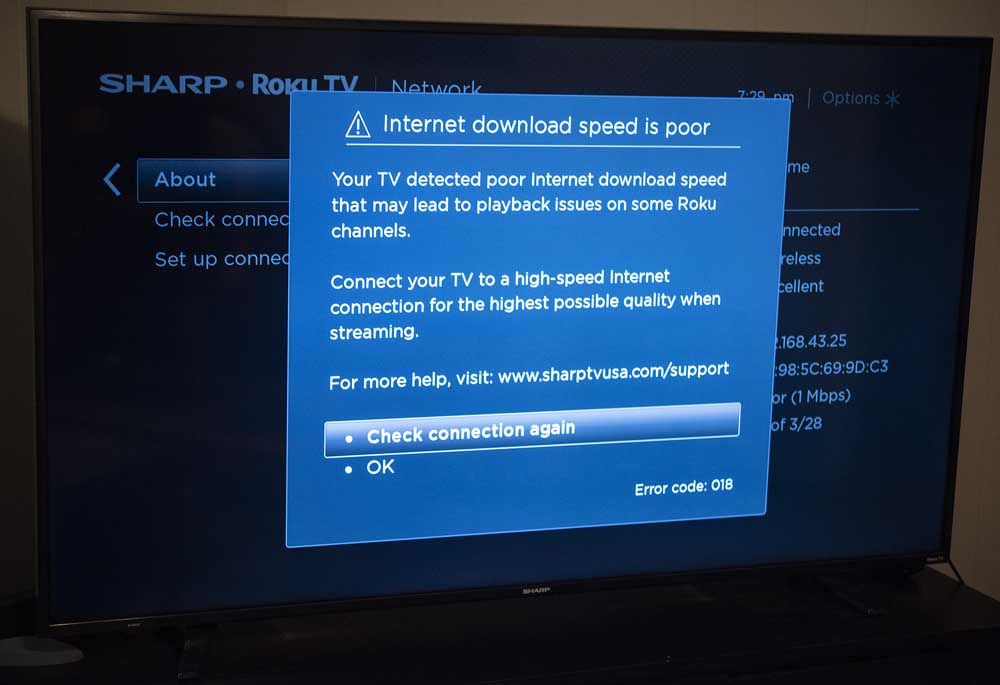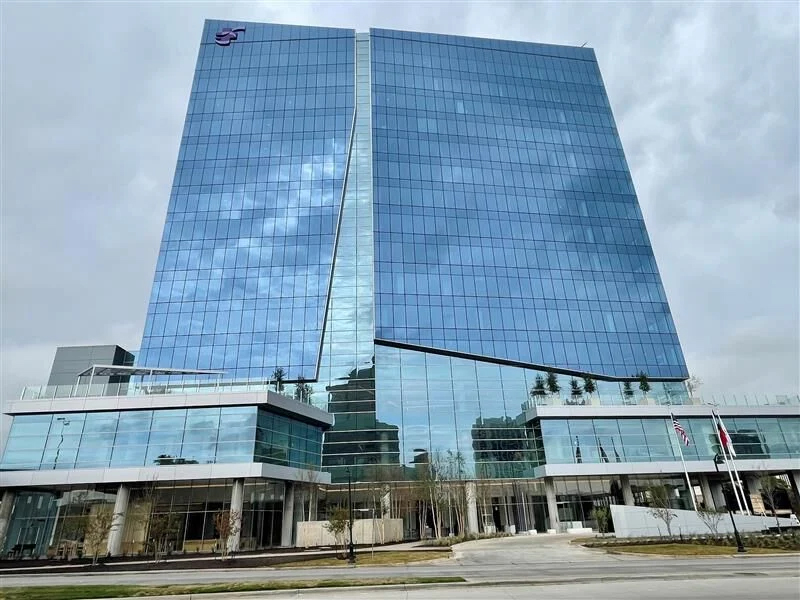Still Buffering: East Texans say internet service available to them is too slow, too expensive
Published 6:00 am Sunday, April 7, 2019

- Keith Sweeden, 20, checks his internet connection on the Roku TV he shares with his girlfriend and her family in Golden on Thursday March 29, 2019. Sweeden does not pay for Broadband service, but uses the hot spot on his cell phone instead to connect to internet-based services like Netflix. (Sarah A. Miller/Tyler Morning Telegraph)
MINEOLA—Mike Holbrook refuses to buy internet service for his home.
Holbrook, 60, has lived in the outskirts of Wood County for 14 years. He has access to a high-speed internet provider, but he said he’d rather not bother with it.
“We’re unplugged, and it’s nice,” Holbrook said. “I’m not spending an awful lot of time just sitting there surfing channels. I read a lot.”
Holbrook is not alone. Millions of people across Texas choose not to buy internet service for their homes for reasons including availability, cost and general disinterest in the product.
Texas ranks No. 38 in in the nation for its rate of people who subscribe to broadband service, according to a 2018 report by Connected Nation. Fewer than 36 percent of households in the state had broadband as of 2017.
“The monthly cost of a broadband subscription is the primary barrier to adoption for one-third of currently disconnected households,” the report said. Another 12 percent said the data plan on their smartphone was enough, and 10 percent said computers were too expensive.
The lowest-cost internet plan Holbrook can buy would be $75.95 for 6 megabits per second (Mbps) of downloading speed. It would cost $85.95 for 10 Mbps of downloading speed, or $95.95 for 20 Mbps of downloading speed.
The price would go down if he bundled his internet with his cable, but he can’t get cable. Nonetheless, all of those speeds are less than the Federal Communications Commission’s definition of broadband, 25 Mbps downloading speed and 3 Mbps uploading.
Connected Nation identifies this as a problem for the local economy, and recommends that Texas start a campaign to encourage people to subscribe to broadband, offer training classes and provide information on low-cost options.
“In the first decade of the millennium, rural counties with home internet adoption rates lower than 40 percent lost more businesses and more jobs than counties with higher rates of adoption,” the report said, and “income grew faster and unemployment grew slower in rural counties with home internet adoption rates higher than 60 percent.”
But consumers in East Texas are generally lower-income than their counterparts in the state or other parts of the country; they report higher costs for internet connection than the national average; and the speeds available are slower than the Federal Communications Commission’s minimum standard for broadband.
The median income for a Texas household in 2017 was $57,051, according to the U.S. Census Bureau. All but one of 41 counties in the East Texas region had lower median household incomes that year. The numbers were as low as $32,394 in San Augustine County.
East Texans also are more likely than their statewide or nationwide counterparts to live in poverty. Thirty-seven out of 41 of the region’s counties had poverty rates in 2017 that were higher than the national rate of 13.7 percent, and the state’s rate of 14.7 percent, according to data from the U.S. Census Bureau.
HighSpeedInternet.com puts the average cost of stand-alone internet service with a major internet service provider at $50 to $60 per month, depending on promotional offers. The average speed among those plans was more than 200 megabits per second for downloading, or about ten times what Holbrook was offered for $99.95 a month.
“It’s not right that you pay more for less speed, but often times costs are interrelated because some people will pay the cost regardless,” said Chris Pederson, from Connected Nation, who has done work mapping broadband access in Texas.
Pederson said the more people can rationalize the cost of a broadband connection, the more likely they are to buy it. For example, he said a person with a commute to Dallas whose employer offers telecommuting one day a week can justify the savings of not commuting one day per week.
A 2017 study from Ohio State University estimated that consumers with broadband can save more than $9,000 per year on living expenses because they are able to maximize discounts that only are available online.
However, low-income shoppers are more likely to weigh negatives of broadband, such as identity theft and credit card security issues, while higher-income shoppers were more likely to focus on the benefits of online shopping.
Maddi Regalado, 22, of Golden, said her household of six relies on two mobile hotspots to connect to the internet, a decision the family made after assessing the internet service available through two providers who offer service in the area.
Regalado looked into a satellite internet company, which said she could pay $129 per month for 50 gigabytes of data — enough to stream about 70 hours of video or 15 hours of high-definition video. After the initial 12 months, the price would go up to $149 per month, she said.
“I need internet at my house, and I know other people are in the same situation, and I can’t afford $149 a month. I just can’t afford it,” Regalado said. She said her family’s group car insurance already runs $700 a month. “If there was another reasonable option or anything else, I would definitely be all in for it.”
Another company had previously quoted the family $100 a month, and they decided against buying it, she said. She reached back out to the company more recently and found out service may not be able to be run to her address. The customer service representative promised a call back.
“It kind of makes you feel excluded from everyone else,” Regalado said of the situation. “Even though you don’t want to live in the city, I love my country life. I love having my neighbors a half mile away, but I’d also like to be included in all of the other resources that people want to have.”
Rowdy Heddin, 44, of Edgewood, is in a similar situation as Holbrook. His family can get satellite internet service from the same local provider for $96 a month, but he said the service would not provide a steady internet speed, and Netflix and YouTube would be out of the question.
Another provider told Heddin the company would need to charge $1,490 to install a tower in his backyard for the family to get an internet signal. After the installation, the service would cost $70 per month, he said.
“We’re in the middle of nowhere where we are,” Heddin said. “They come to my house, and they just couldn’t get a big enough signal, strong enough signal. They say, ‘You gotta buy this tower,’ so we didn’t get it.”
TWITTER and INSTAGRAM: @_erinmansfield
This is part three of a five-part series about how a lack of connectivity affects East Texans.
Part 1: East Texas lags the rest of the state in broadband
Part 2: Rural libraries fill the broadband void
Part 3: Some East Texans say broadband is too slow and too expensive
Part 4: How a federal grant helped
Part 5: A decade of work has gone into broadband grant seeking.






